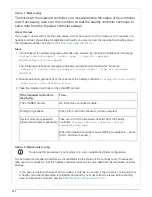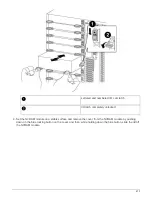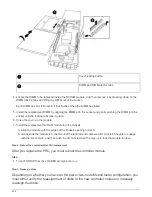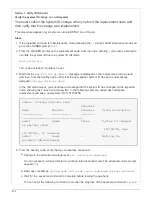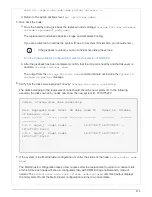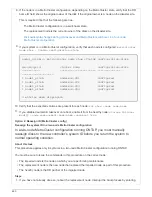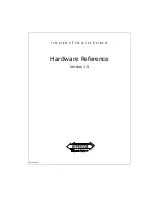
8. If the node is in a MetroCluster configuration, depending on the MetroCluster state, verify that the DR
home ID field shows the original owner of the disk if the original owner is a node on the disaster site.
This is required if both of the following are true:
◦
The MetroCluster configuration is in a switchover state.
◦
The
replacement
node is the current owner of the disks on the disaster site.
9. If your system is in a MetroCluster configuration, verify that each node is configured:
metrocluster
node show - fields configuration-state
node1_siteA::> metrocluster node show -fields configuration-state
dr-group-id cluster node configuration-state
----------- ---------------------- --------------
-------------------
1 node1_siteA node1mcc-001 configured
1 node1_siteA node1mcc-002 configured
1 node1_siteB node1mcc-003 configured
1 node1_siteB node1mcc-004 configured
4 entries were displayed.
10. Verify that the expected volumes are present for each node:
vol show -node node-name
11. If you disabled automatic takeover on reboot, enable it from the healthy node:
storage failover
modify -node replacement-node-name -onreboot true
Option 2: Reassign ID (MetroCluster config)
Reassign the system ID in a two-node MetroCluster configuration
In a two-node MetroCluster configuration running ONTAP, you must manually
reassign disks to the new controller’s system ID before you return the system to
normal operating condition.
About this task
This procedure applies only to systems in a two-node MetroCluster configuration running ONTAP.
You must be sure to issue the commands in this procedure on the correct node:
• The
impaired
node is the node on which you are performing maintenance.
• The
replacement
node is the new node that replaced the impaired node as part of this procedure.
• The
healthy
node is the DR partner of the impaired node.
Steps
1. If you have not already done so, reboot the
replacement
node, interrupt the boot process by entering
680



